Australia: FREE SHIPPING for orders over AUD120.00!
New Zealand: FREE SHIPPING for orders over AUD149.00!
USA: FREE SHIPPING for orders over AUD 250!
Australia: FREE SHIPPING for orders over AUD120.00!
New Zealand: FREE SHIPPING for orders over AUD149.00!
USA: FREE SHIPPING for orders over AUD 250!
Australia: FREE SHIPPING for orders over AUD120.00!
New Zealand: FREE SHIPPING for orders over AUD149.00!
USA: FREE SHIPPING for orders over AUD 250!
Australia: FREE SHIPPING for orders over AUD120.00!
New Zealand: FREE SHIPPING for orders over AUD149.00!
USA: FREE SHIPPING for orders over AUD 250!
Australia: FREE SHIPPING for orders over AUD120.00!
New Zealand: FREE SHIPPING for orders over AUD149.00!
USA: FREE SHIPPING for orders over AUD 250!
Australia: FREE SHIPPING for orders over AUD120.00!
New Zealand: FREE SHIPPING for orders over AUD149.00!
USA: FREE SHIPPING for orders over AUD 250!
Australia: FREE SHIPPING for orders over AUD120.00!
New Zealand: FREE SHIPPING for orders over AUD149.00!
USA: FREE SHIPPING for orders over AUD 250!
Australia: FREE SHIPPING for orders over AUD120.00!
New Zealand: FREE SHIPPING for orders over AUD149.00!
USA: FREE SHIPPING for orders over AUD 250!
Australia: FREE SHIPPING for orders over AUD120.00!
New Zealand: FREE SHIPPING for orders over AUD149.00!
USA: FREE SHIPPING for orders over AUD 250!
Australia: FREE SHIPPING for orders over AUD120.00!
New Zealand: FREE SHIPPING for orders over AUD149.00!
USA: FREE SHIPPING for orders over AUD 250!
Australia: FREE SHIPPING for orders over AUD120.00!
New Zealand: FREE SHIPPING for orders over AUD149.00!
USA: FREE SHIPPING for orders over AUD 250!
Australia: FREE SHIPPING for orders over AUD120.00!
New Zealand: FREE SHIPPING for orders over AUD149.00!
USA: FREE SHIPPING for orders over AUD 250!
Australia: FREE SHIPPING for orders over AUD120.00!
New Zealand: FREE SHIPPING for orders over AUD149.00!
USA: FREE SHIPPING for orders over AUD 250!
Australia: FREE SHIPPING for orders over AUD120.00!
New Zealand: FREE SHIPPING for orders over AUD149.00!
USA: FREE SHIPPING for orders over AUD 250!
Australia: FREE SHIPPING for orders over AUD120.00!
New Zealand: FREE SHIPPING for orders over AUD149.00!
USA: FREE SHIPPING for orders over AUD 250!








